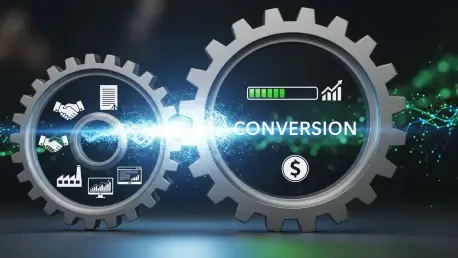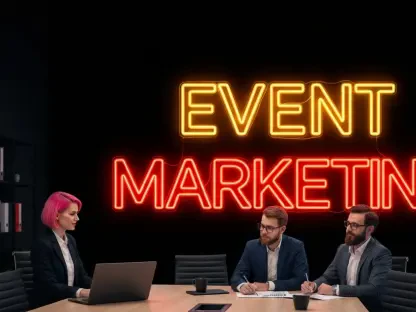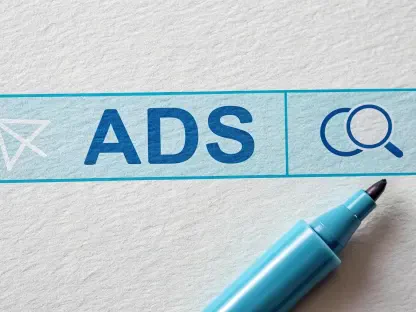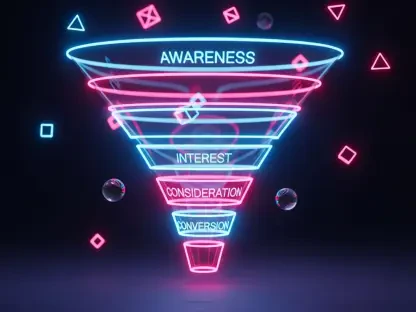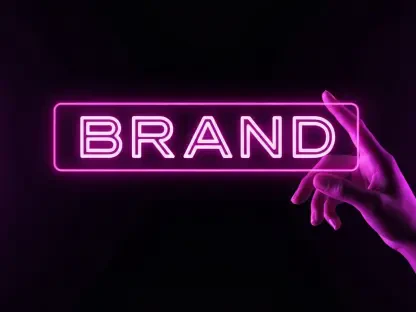Imagine a scenario where a B2B marketing team invests countless hours and a significant budget into campaigns, only to see dismal conversion rates despite tweaking landing pages and offering incentives. The leads just don’t materialize, which is a common frustration in today’s competitive market, where businesses struggle to stand out. The challenge lies in crafting messaging that resonates deeply with potential buyers, cutting through the noise of endless pitches. This guide aims to address that gap by unveiling a powerful 3-step formula designed to transform B2B marketing efforts and drive meaningful conversions.
The purpose of this framework is to shift the focus from company-centric narratives to buyer-centric solutions, ensuring that every piece of copy speaks directly to what matters most to the audience. In an era where attention spans are fleeting, capturing interest and sustaining engagement is more critical than ever. By following this structured approach, marketers can create compelling messages that not only attract attention but also inspire action. This guide offers a clear path to reframe communication strategies for better results.
Understanding the importance of this shift cannot be overstated. Many businesses fail to convert because their messaging misses the mark, leaving prospects uninterested or unconvinced. A well-executed strategy that prioritizes the buyer’s perspective can be the difference between stagnant growth and a thriving pipeline. This guide provides actionable insights to overhaul B2B messaging, making it a vital tool for any marketer looking to elevate their conversion rates.
Why Your B2B Marketing Isn’t Converting—and How to Fix It
Many B2B marketing initiatives fall short of their goals, even after endless adjustments like simplifying form fields or embedding personalized email offers. The persistent lack of results often leaves teams puzzled, as these surface-level changes fail to address deeper issues. Despite best efforts, campaigns continue to underperform, with prospects slipping away before taking any meaningful action.
The core problem lies in the messaging itself, which frequently centers on the company or product rather than the buyer’s needs. Traditional approaches often emphasize features, brand stories, or internal achievements, which fail to connect with an audience primarily concerned with their own challenges and aspirations. This disconnect creates a barrier that prevents potential customers from seeing the relevance of the offer.
Fortunately, a solution exists in the form of a modern 3-step copywriting formula tailored to drive action by focusing on what buyers truly value. This approach flips the script, prioritizing the audience’s perspective to create a more engaging and persuasive narrative. By addressing the buyer’s immediate concerns, this method paves the way for higher engagement and conversions.
In today’s fiercely competitive landscape, adopting buyer-centric messaging is not just an option but a necessity. With countless businesses vying for attention, standing out requires a deep understanding of what motivates purchasing decisions. This guide sets the stage for exploring how a structured, audience-focused framework can transform underperforming campaigns into powerful conversion tools.
The Shift in B2B Buyer Expectations: Why Old Tactics Fail
Over recent years, B2B marketing has undergone a significant transformation, with buyer priorities moving away from company narratives toward personal outcomes. Prospects are no longer swayed by lengthy descriptions of a business’s history or mission. Instead, they seek solutions that directly impact their day-to-day challenges and long-term goals, demanding messaging that reflects this shift.
Outdated formulas, such as the classic “who we are, what we do, how we help” structure, struggle to resonate in a fast-paced, self-focused market. These approaches often fail to capture attention because they delay addressing the buyer’s core question: how does this benefit me? As a result, potential customers quickly lose interest, moving on to competitors who offer clearer value propositions.
The need for immediate relevance in messaging has never been more critical. With information overload a constant reality, buyers expect content that cuts to the chase, delivering value within seconds of engagement. Without this clarity, bounce rates soar, and opportunities for connection are lost, underscoring the importance of adapting to modern expectations.
Modern B2B buyers also demand concrete proof before committing to any offer. They research extensively, compare options, and seek evidence of results, making vague promises or generic claims ineffective. Crafting messages that provide instant clarity and credible validation is essential to maintaining interest and fostering trust in a skeptical market.
Breaking Down the 3-Step Formula for Higher Conversions
This section introduces a practical framework designed to turn B2B messaging into a powerful driver of conversions. By aligning content with the buyer’s thought process, this formula addresses critical questions at each stage of their journey. It offers a systematic way to transform casual interest into confident action.
Each step of this 3-step approach tackles a fundamental concern that buyers have when encountering a product or service. From understanding the personal benefits to visualizing practical applications and overcoming doubts, the framework guides prospects seamlessly from curiosity to commitment. This structured progression ensures no opportunity for disengagement arises.
Step 1: Highlight the Benefit with “What Do I Get?”
The first step focuses on the buyer’s initial question upon landing on a page or viewing an ad: how does this improve their life or work? Capturing attention within the first five seconds is crucial, as delays in conveying value often result in lost prospects. Leading with a clear, tangible outcome sets the tone for a compelling interaction.
Crafting a Hero Narrative
Positioning the buyer as the hero of the story is a powerful way to make the benefit resonate. This involves illustrating what they can achieve with the solution, such as launching a marketing campaign effortlessly with minimal resources. Highlighting achievements that elevate their status, like impressing senior leadership or gaining industry recognition, adds an emotional hook to the message.
Painting a Compelling Picture
Using specific, vivid language is essential to make the benefit feel personal and immediate. Descriptions should paint a detailed picture of the outcome, such as “streamline operations to save 10 hours a week” rather than generic promises of efficiency. This approach helps prospects visualize the transformation, making the offer more enticing and relatable.
Step 2: Demonstrate Value with “How Can I Use It?”
The second step leverages storytelling to show how the product or service fits into the buyer’s reality. By presenting relatable use cases, the offer transitions from an abstract concept to a practical solution. This visualization process is key to helping prospects see themselves benefiting from the product in tangible ways.
Leveraging Success Stories
Showcasing real-world applications through specific examples builds a stronger connection with the audience. For instance, describing how an operations manager built a lead scoring system in just two hours provides a concrete scenario that others can imagine replicating. Such stories should include measurable outcomes, like percentage improvements or time saved, to reinforce the solution’s impact.
Making It Relatable
Tailoring use cases to common pain points or goals within the target audience maximizes relevance. Addressing specific challenges, such as reducing ad spend waste or automating repetitive tasks, ensures the examples strike a chord with prospects. This customization transforms generic claims into targeted solutions that feel directly applicable to the buyer’s situation.
Step 3: Build Trust with “Why Should I Believe You?”
The final step addresses buyer skepticism, a significant barrier to conversion. Doubts about credibility, cost, or implementation can stall decisions, making it essential to tackle these concerns proactively. By anticipating and resolving hesitations, trust is established, paving the way for confident action.
Tackling Common Objections
Directly addressing typical concerns, such as budget constraints or integration issues, prevents hesitation. Offering clear reassurances, like “start free and pay only when results are visible” or “onboarding completed in under 30 minutes,” helps alleviate fears. These solutions should be presented upfront to avoid prospects abandoning the process due to unresolved questions.
Proving Credibility
Social proof plays a vital role in validating claims and building confidence before prospects reach the pricing stage. Highlighting reputable client names or impressive statistics, such as a 60% reduction in campaign build time for known companies, reinforces reliability. These elements provide the evidence buyers need to move forward without second-guessing the offer.
Quick Recap: The Formula at a Glance
This 3-step formula can be distilled into a simple, memorable format for easy application. Step 1, “What Do I Get?” focuses on leading with clear, personal benefits that grab attention instantly. Step 2, “How Can I Use It?” demonstrates value through real-world stories that make the solution tangible.
Step 3, “Why Should I Believe You?” addresses doubts with credible proof and direct solutions to objections. Together, these steps form a cohesive journey that guides buyers from initial interest to decisive action. This streamlined approach ensures every interaction builds toward conversion.
Applying the Formula Across Industries and Trends
This messaging framework is versatile enough to adapt to various B2B sectors, from SaaS platforms to consulting services. Whether targeting tech-driven enterprises or traditional industries, the formula’s focus on buyer needs remains universally applicable. Tailoring the language and examples to specific industry challenges ensures maximum impact.
The approach also aligns with emerging trends, such as AI-driven marketing tools or solutions for remote team collaboration. As businesses increasingly adopt advanced technologies or adapt to distributed workforces, messaging can highlight relevant benefits, like automating campaign creation or enhancing virtual coordination. Staying attuned to these shifts keeps content fresh and engaging.
Challenges, such as balancing brevity with depth in copy, may arise during implementation. To overcome this, prioritize the most impactful benefits and stories, trimming unnecessary details while preserving clarity. As buyer expectations continue to evolve, ongoing innovation in messaging will be crucial to maintain relevance and effectiveness in a dynamic market.
Take Action: Transform Your B2B Messaging Today
Looking back, the journey through this guide revealed a transformative 3-step formula that shifted the focus from product-centric pitches to buyer-focused narratives. Marketers who adopted this approach tackled the root causes of low conversions by prioritizing what prospects truly valued. Each step played a pivotal role in guiding potential buyers from curiosity to commitment.
Moving forward, the next actionable step involves auditing existing messaging to identify areas misaligned with buyer needs. Testing this framework on a single landing page, email campaign, or ad provides a low-risk way to measure impact. Tracking engagement metrics and lead generation after implementation offers concrete insights into the formula’s effectiveness.
Beyond immediate application, considering long-term strategies becomes essential. Exploring how this framework could integrate with broader marketing initiatives or adapt to future buyer trends ensures sustained success. By committing to this buyer-centric mindset, businesses position themselves for higher engagement, increased leads, and ultimately, stronger revenue growth.
